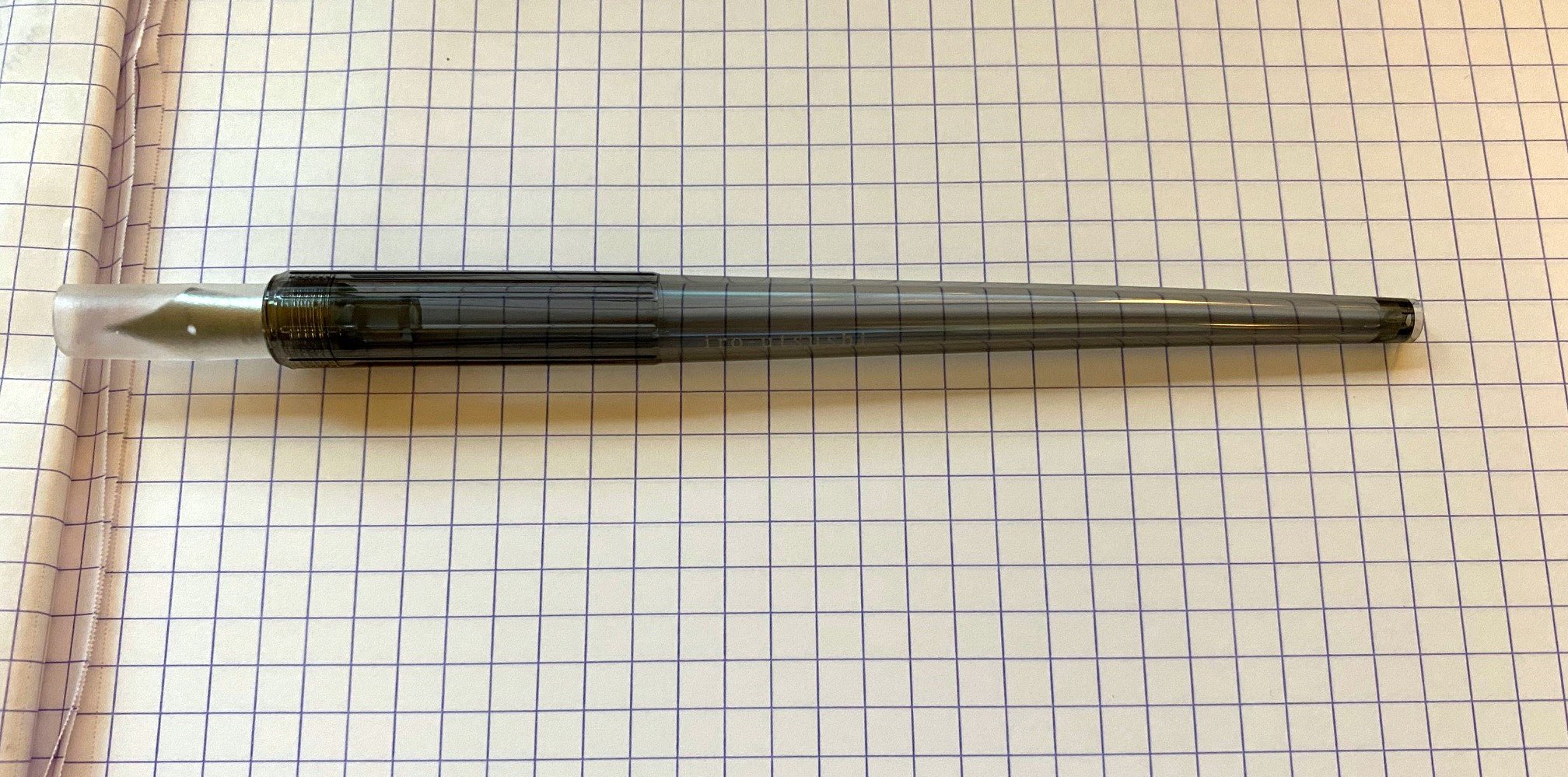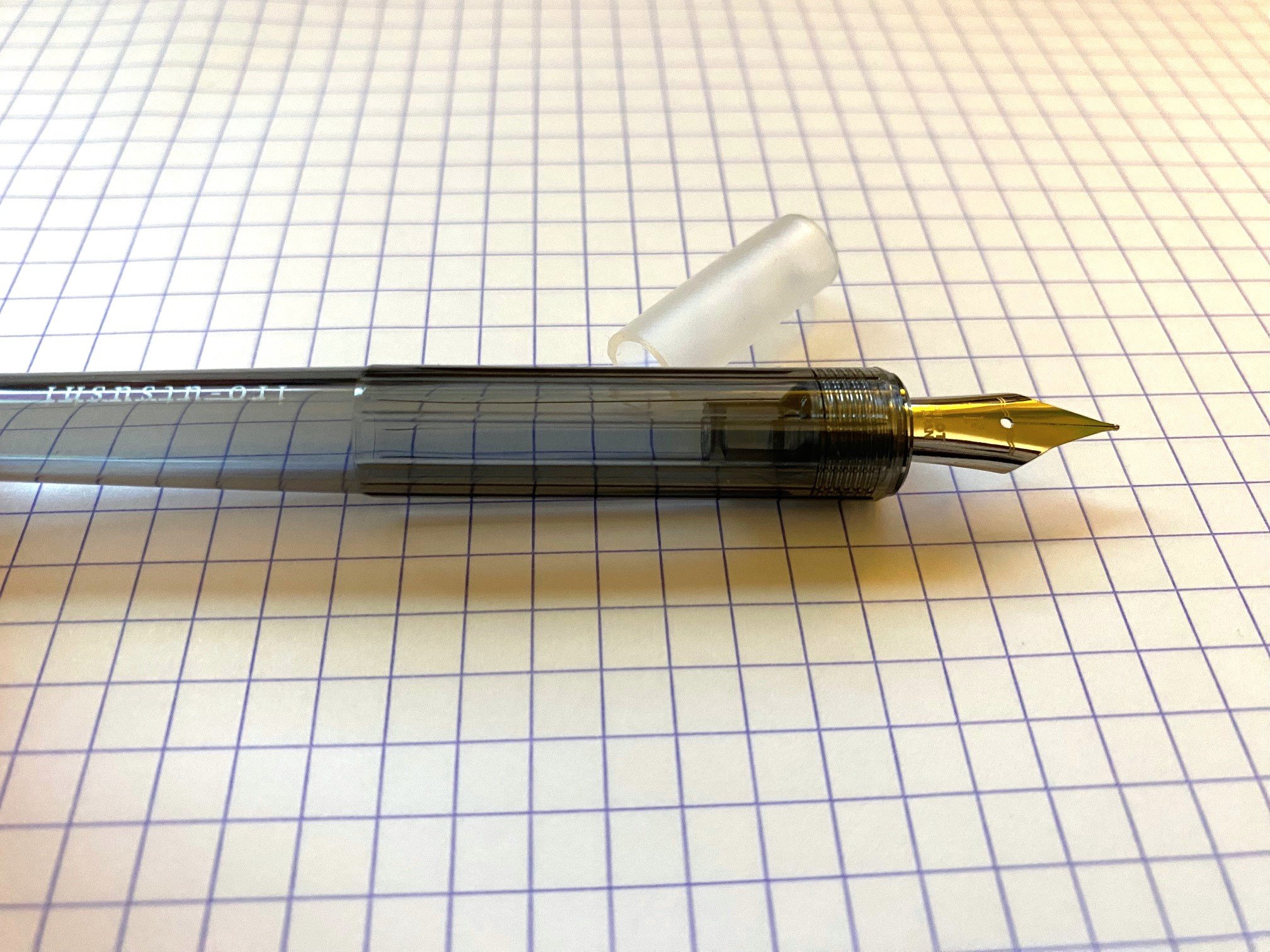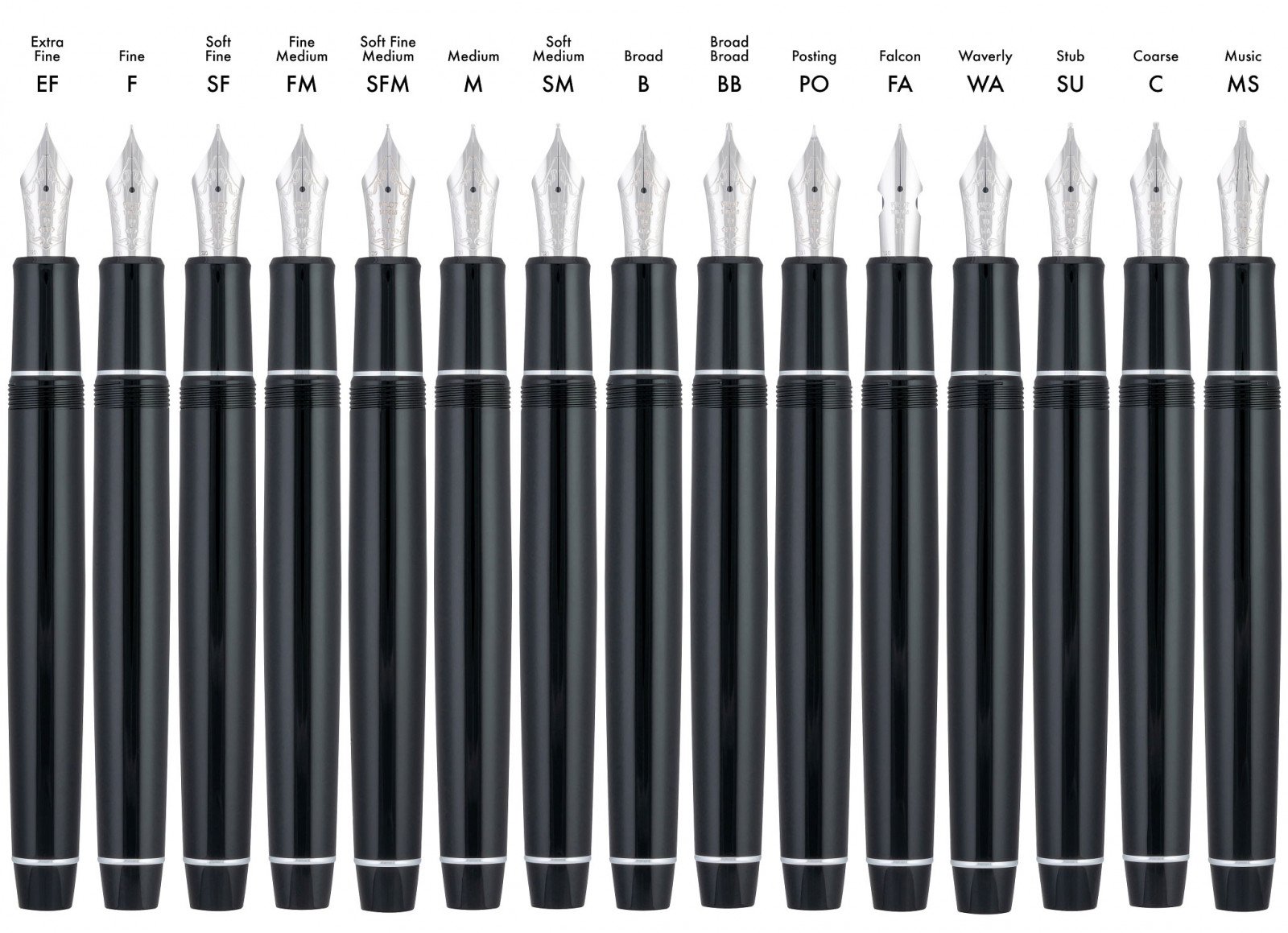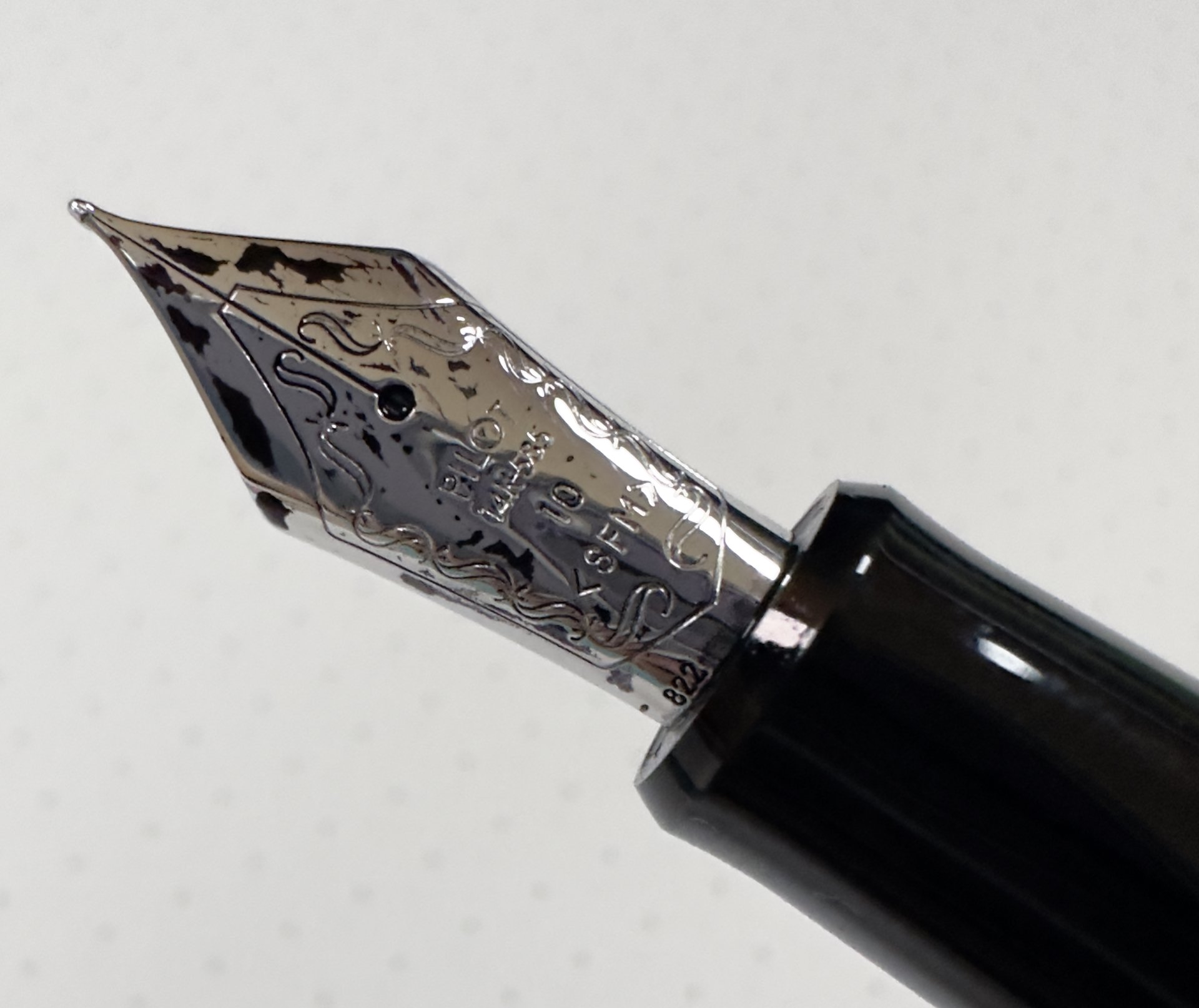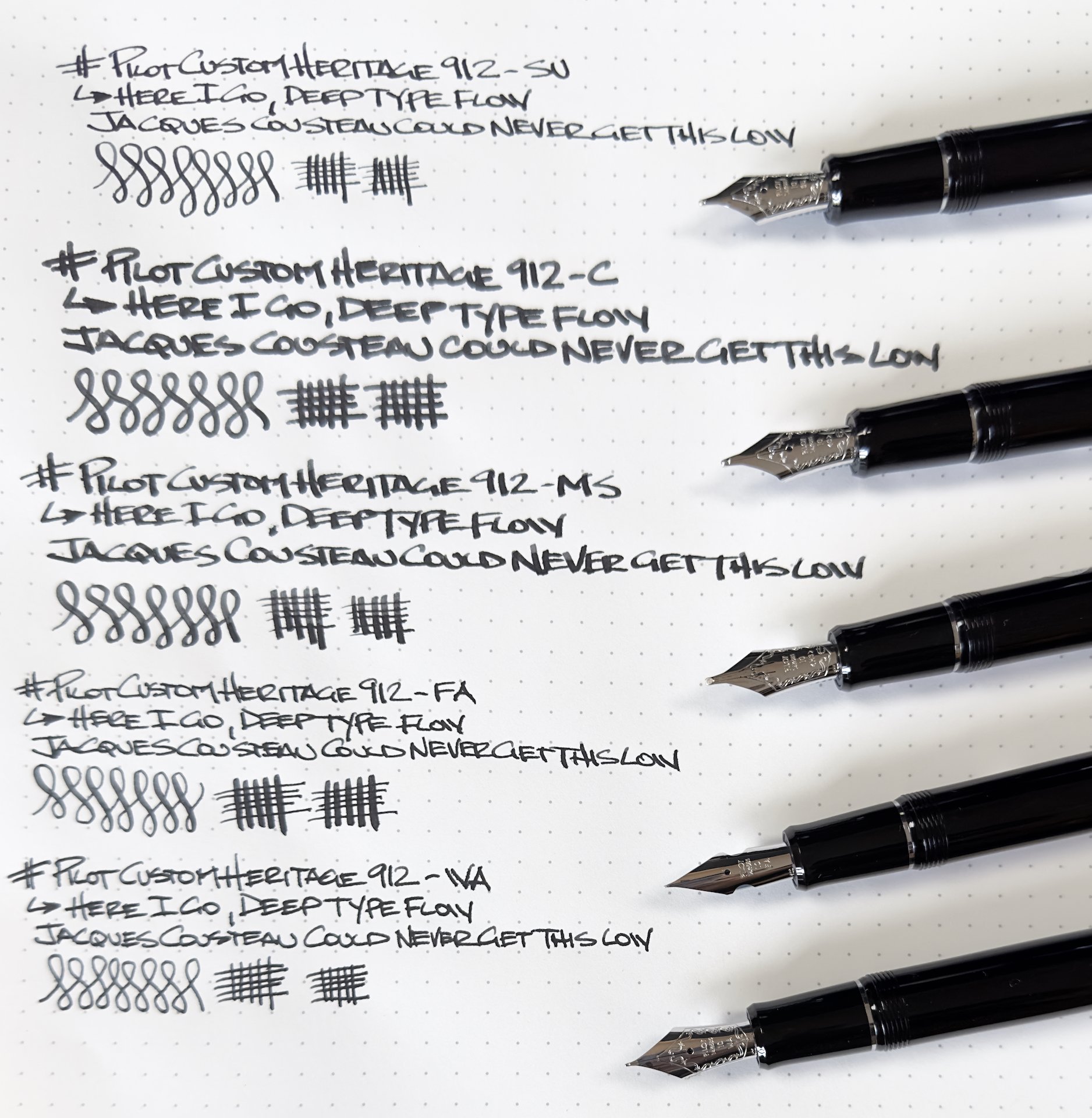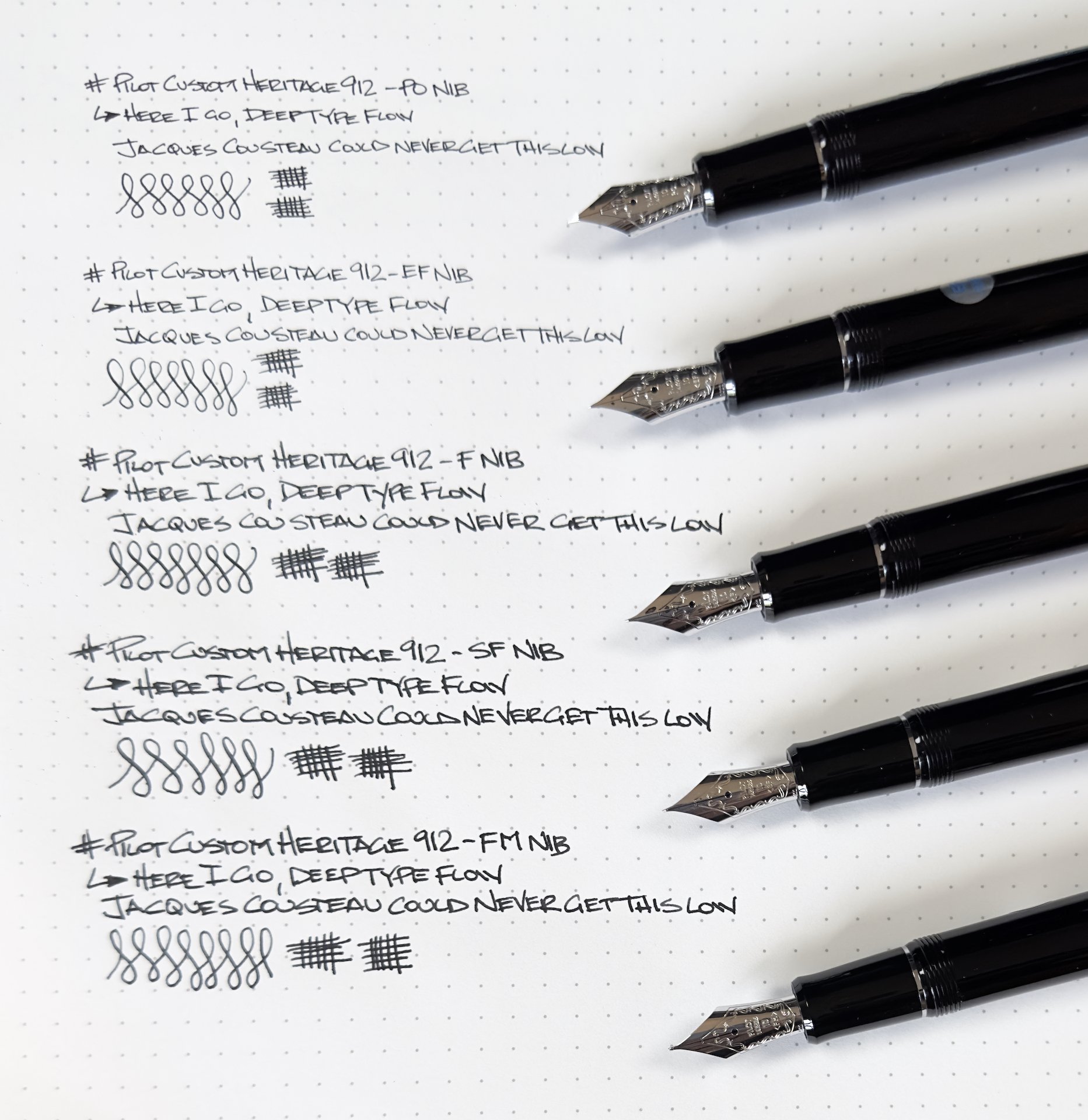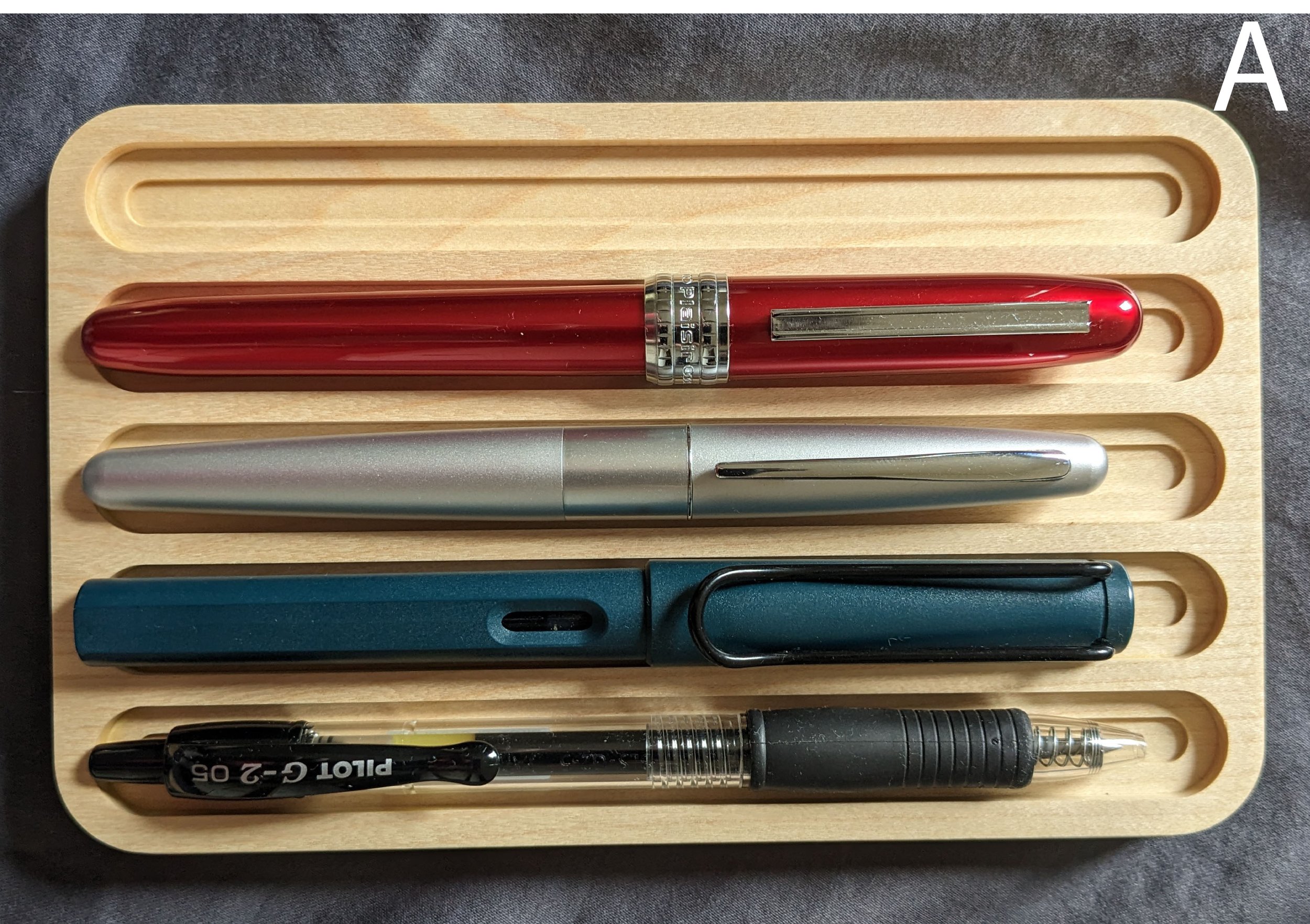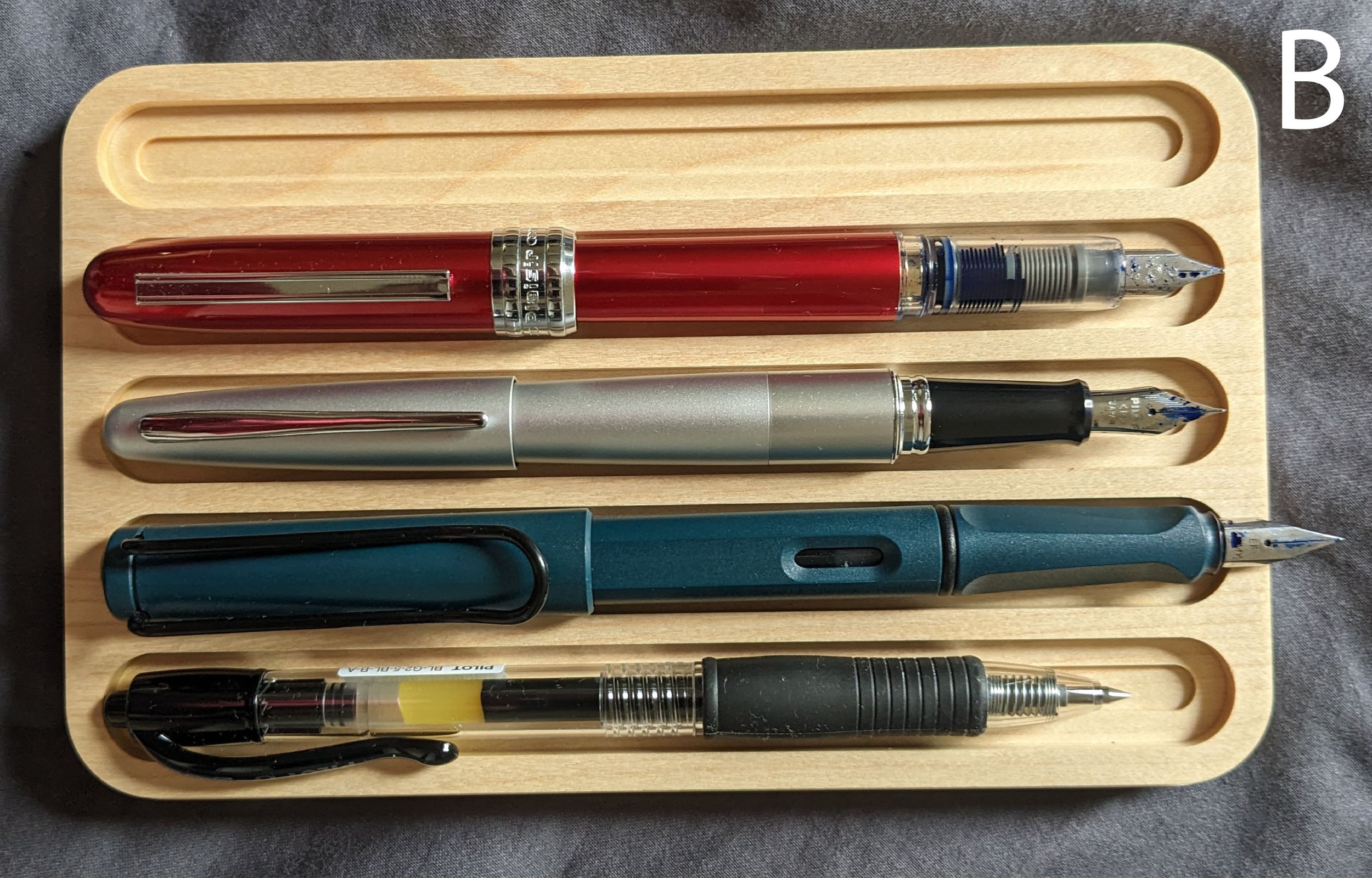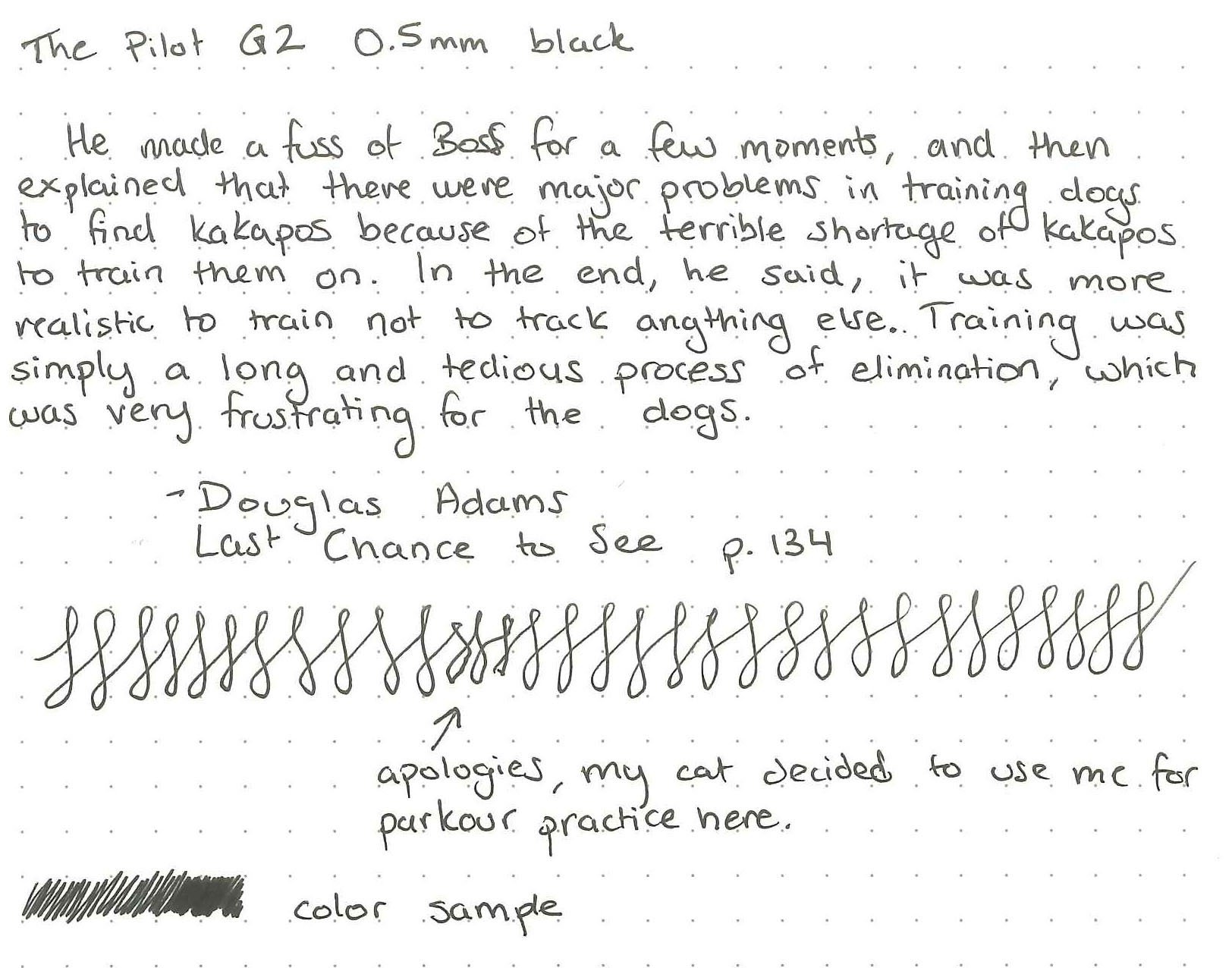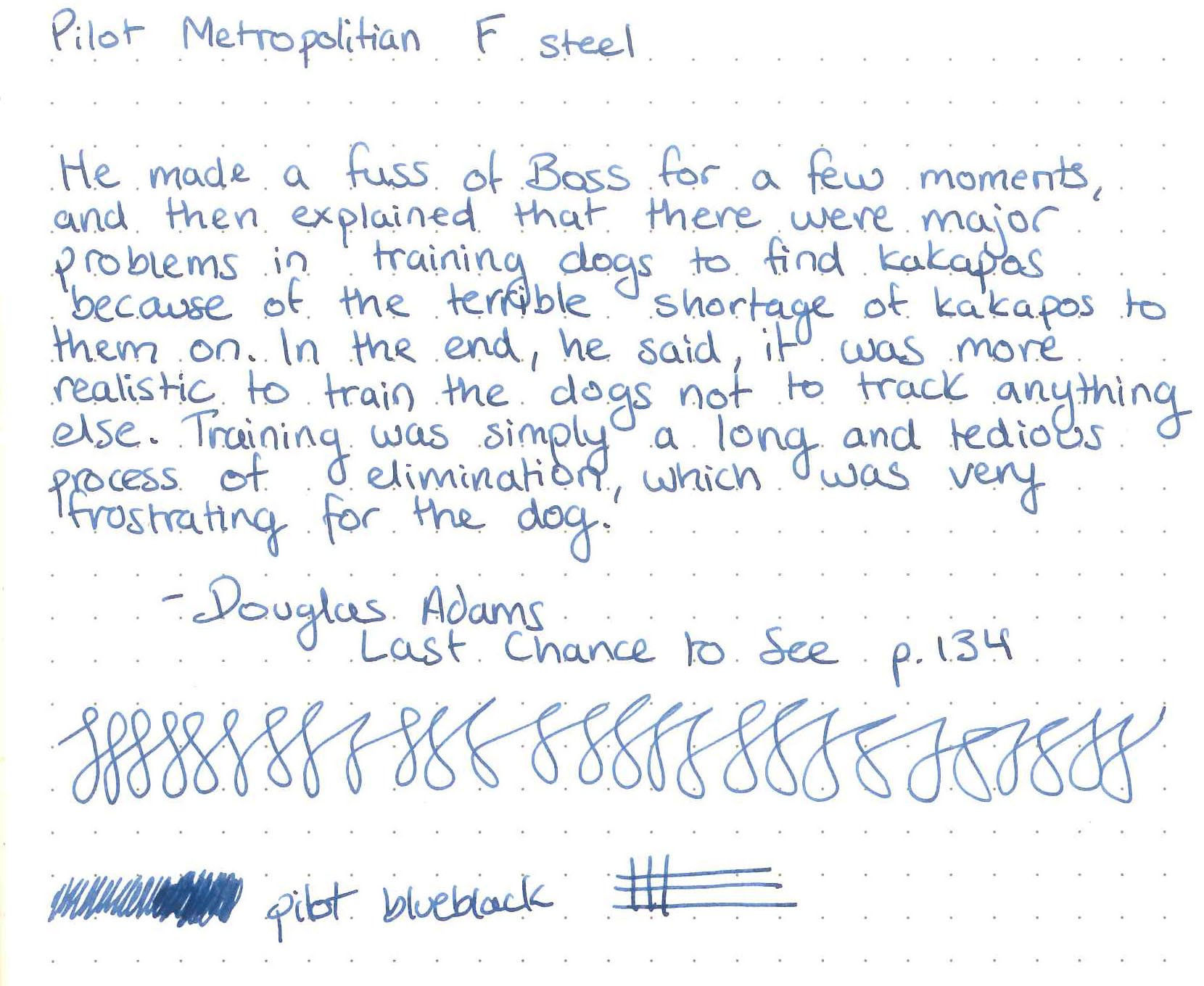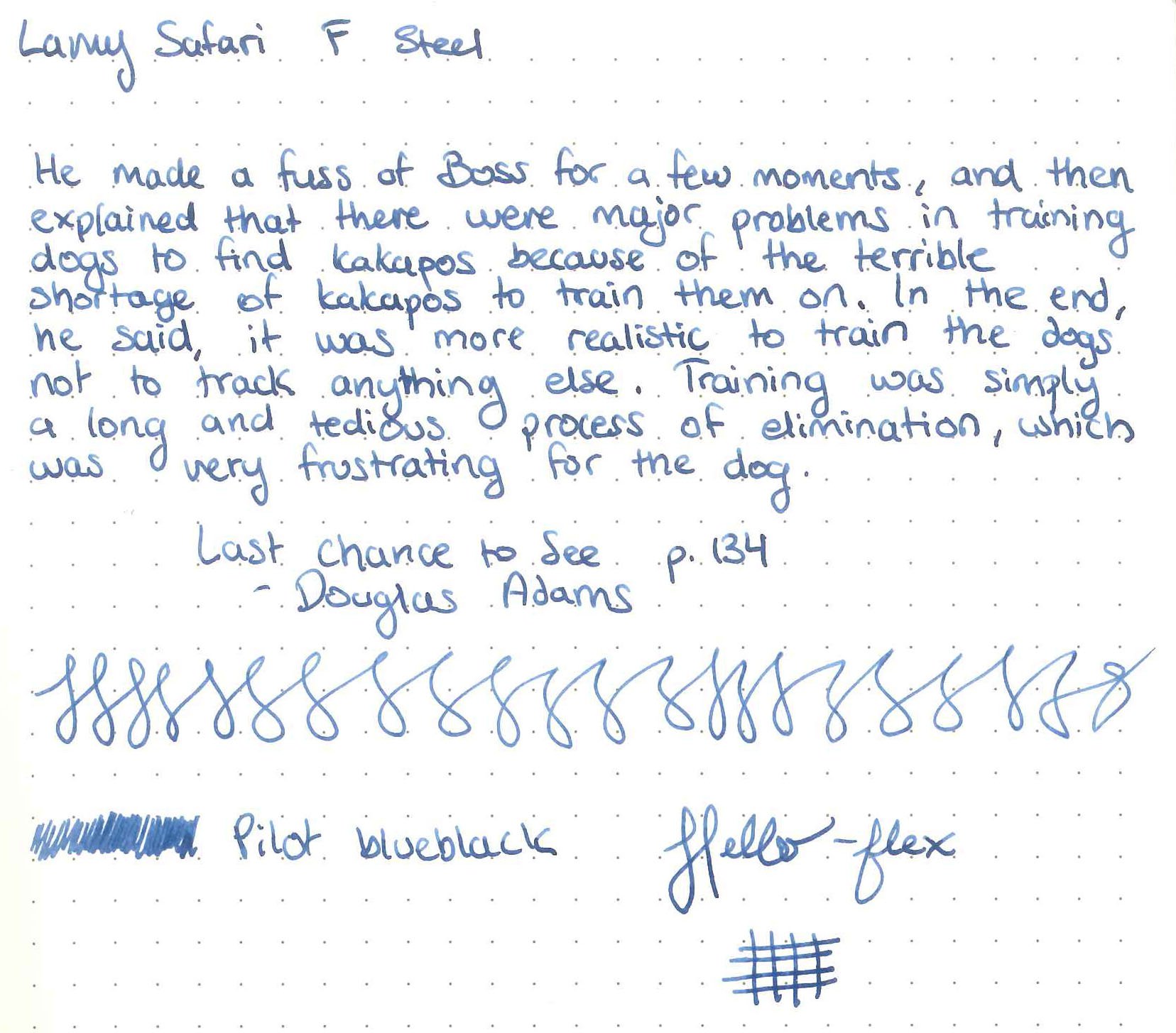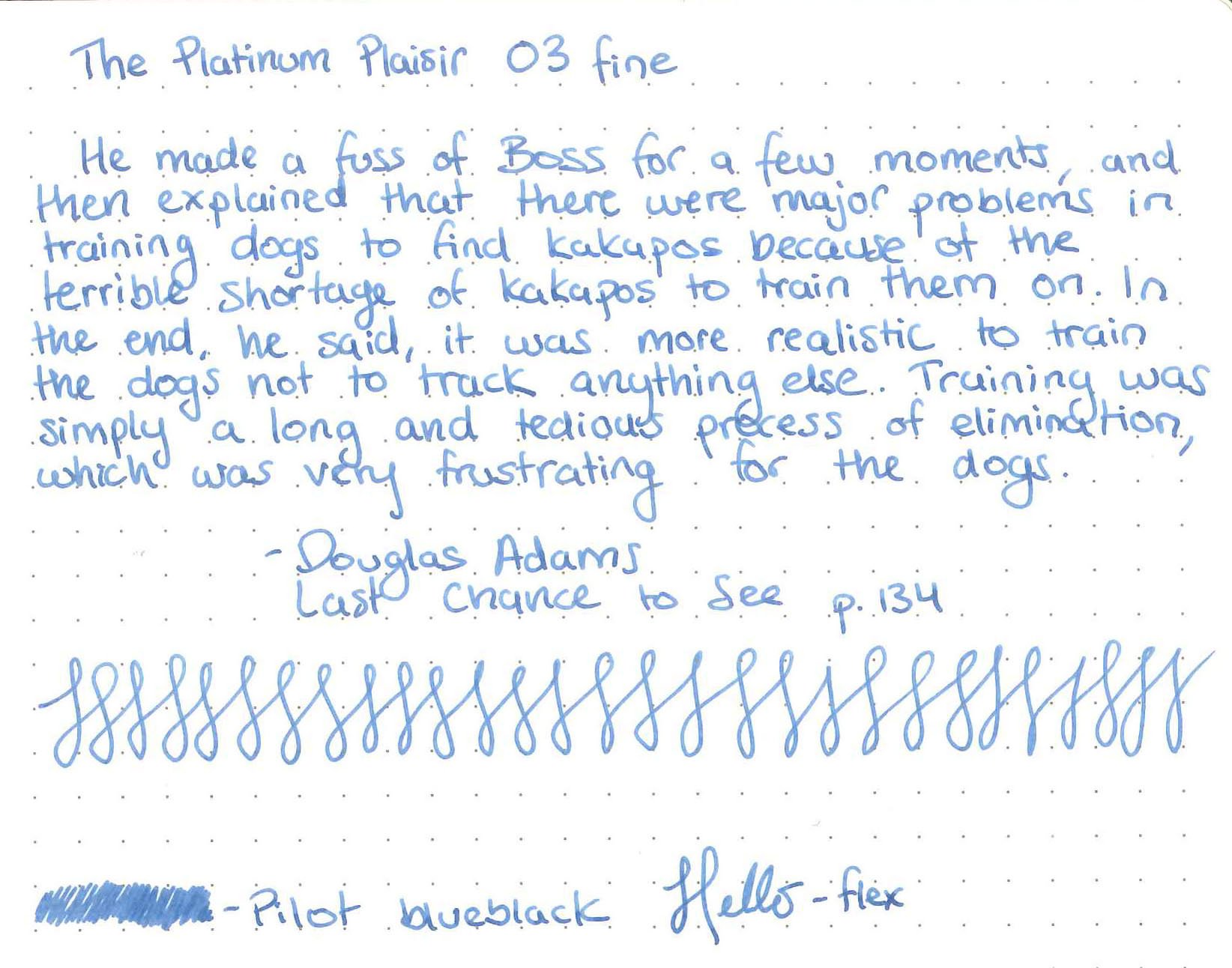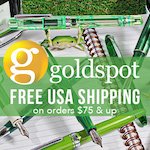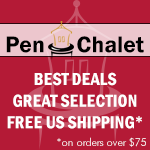(This is a guest Post from Sam Alpert. Sam is a geologist, gamer, and general lover of all things with good, clean design that will last a lifetime.)
ABSTRACT
I have compared a number of properties, both quantifiable and subjective, across three of the most widely-recommended beginner fountain pens: the Pilot Metropolitan, Lamy Safari, and Platinum Plaisir. Based on my findings I have determined that the Pilot Metropolitan represents the best balance across all compared categories and is therefore the best beginner fountain pen.
PREFACE
I am assuming that the person purchasing this pen wants to use their own ink, and will therefore also need a converter. For those looking to get the highest ease of use a cartridge is significantly easier, but it also limits you to the inks available in them. To me this defeats one of the biggest reasons to switch to a fountain pen: being able to choose almost any ink color imaginable. I am also assuming that the person purchasing this pen is not prone to losing their possessions and is willing to make some sacrifices in terms of ease of use in order to switch to a fountain pen. If you are not, then stop reading now. You may as well stick with ballpoint or rollerball pens. There are many phenomenal options out there for upgrades from the basic Pilot G2 and this article does not cover them.
BACKGROUND
My name is Sam. I'm a PhD candidate studying meteorites at the American Museum of Natural History. I've always been very pedantic with a tendency to nit-pick my possessions. I like things to last while serving their purpose as cleanly and effectively as possible. I've loved pens ever since I first saw my grandfather's Cross pen/pencil set he kept on his desk. I like simple, classic designs; I prefer my writing utensils to only serve one purpose at a time. I wouldn’t attempt to use a fountain pen (FP) to write lab notes (though I have at least tried). Likewise, I see no better utensil to write notes on talks, papers, and to-do lists than a FP.
Disclaimer: this article does not describe how to use a fountain pen, or what each individual part of a fountain pen is. Such information is not in debate and there are numerous resources online that will provide this background. The goal of this article is to help answer the most basic question one is left with after researching FPs and deciding to take the plunge and buy a first one: which is the best?
The primary reason for writing this article was the lack of inter-comparisons across the internet. Most reviewers do not put pens head to head. Instead they review one pen at a time, and while they may have a rudimentary formula for how their review is conducted, a comprehensive series of quantifiable and subjective criterion is often lacking, instead opting for soft (non-quantifiable) comparisons to a single property of a single similar (or dissimilar) FP. For example, The Pen Addict’s review of the Metropolitan contains only a single mention of the Safari as his preferred entry level fountain pen, with the given reason as it having more barrel options (6). The article doesn’t discuss things like the ink capacity of the FP, a feature which may be more important to some than barrel options. In addition the article, which was published in 2013, doesn’t line up with the current recommendations on his “Top 5 Fountain Pens for Beginners” list (7).
This lack of continuity across even a single reviewer is not unsurprising. Changes in taste and shifts in the market play a huge role in the opinions a reviewer might hold. Additionally, most reviewers do not all start by reviewing the most popular, or most entry level FPs before moving on. The process of reviewing pens this way is organic, but lacks a rigorous baseline from which to compare reviews against one another.
Broadening the spectrum to other reviewers we find that searching for “the best beginner fountain pen” also results in a wide range of opinions, most of which do not agree. The Pilot Metropolitan, Platinum Preppy, LAMY Safari, TWSBI Eco, and Kaweco Sport all appear repeatedly in lists online (1, 2, 3, 4, 5, others). Less commonly mentioned are pens like the Platinum Plaisir, Diplomat Magnum, and a variety of pens by Jinhao (2, 5). Browsing forums like Reddit or Fountain Pen Network will give similar results. These recommendations range in their level of detail from simple filters on a retailer’s website (5) to full guides with extensive reviews of each individual pen in separate articles linked from the body of the guide (1). Each of these reviews still lack methodology or criterion that are shared across each pen. Even in cases where pens are compared to each other, there is little consistency in what aspect of each pen is being compared. For example, a review might state that the Safari is lighter than the Metropolitan, and therefore more comfortable for long writing sessions. However, when comparing the Plaisir to the Metropolitan weight is not referenced at all, and instead the review focuses on how wet or dry the nibs are relative to each other. The lack of consistency fails in the primary objective of assisting a reader in determining which pen to buy. As an additional example, were one only concerned with ink capacity and price then neither of the aforementioned comparisons would help in the decision making process. While reading multiple reviews is always the best method to get the broadest view of any topic, the lack of salient points to compare across those reviews makes developing a consistent opinion impossible.
This article seeks to address this lack of baseline by using the same methods to compare each pen under review. Thereby providing the reader with all the information necessary to make their own comparisons or conclusion as to which pen they would prefer. This also allows the reader to compare this article to articles from other sources no matter what points those reviews chose to cover.
METHODS
Each pen will be compared based on its specific characteristics: materials, price, filling mechanisms, available options (colors and nib sizes), weight, length, grip diameter, and grip style. Pens will be subjected to 1 week of real world use. During this time the pen will be carried unprotected in my daily bag (either in the pouch on the front of the laptop sleeve of a Timbuktu messenger bag or the top zipper compartment of my Osprey Stratos 24 backpack) along with a few other EDC items (varies depending on the day). This is intended to test the durability of the finish of the pen and its reliability when used afterwards. For the entire week this will be the only fountain pen I use. I will also carry the pen in my pants pocket for 1 day of the week while at work to provide an added level of stress testing.
Pens will also be put through a series of tests under controlled conditions. This will include: a standard writing test (same passage will be used for all pens) in a Leuchtturm1917 Notebook Classic, a short writing test (sample sentence and some line tests) in a generic Staples brand notepad, and a test consisting of 5 drops from desk height onto my office floor (carpet tile over concrete) to simulate accidents that may occur during daily use. For all writing test pens will use the same ink: Pilot Blue Black. This ink was chosen for being relatively inexpensive per mL, acceptable dry time (<20 s), good performance (not too dry, not too wet), ease of cleaning, high quality (relatively resistant to developing mold), and good color (subjective but I just couldn’t bring myself to do this with black ink, sorry, not sorry).
Each pen will also be evaluated based on a series of additional subjective points. This will include: writing feel (how smooth the nib is, how much feedback the nib has, how comfortable the pen is while writing), ease of maintenance, ease of carry, and aesthetics.
RESULTS
Physical Characteristics
The physical characteristics of each pen are listed in Table 1. This information was gathered from a combination of my own measurements in the case of the length, weight when full, minimum/maximum section diameter, and drop test. The ink capacity of the converters, and prices were sourced from JetPens.com.
Table 1 - Physical characteristics of pens

